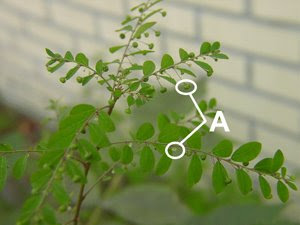
Sanitation is important for disease, insect, and weed control in greenhouses.
Longstalked phyllanthus. Notice the flowers at the leaflet axils (labeled A).
Liverwort in trays. A gemma cup (circled and marked as A) is the asexual means of propagation.
Flowering woodsorrel. Seeds can shoot 12 feet.
Dodder. The parasitic vine (circled and labeled A) and the flowers (circled and labeled B) of the plant.
Hairy bittercress fruits (labeled A) and flowers (labeled B). All pictures were copied from the following website: http://pubs.caes.uga.edu/caespubs/pubcd/B1246.htm
Tag Archives: woodsorrel
Weed Hotline Issue 19
